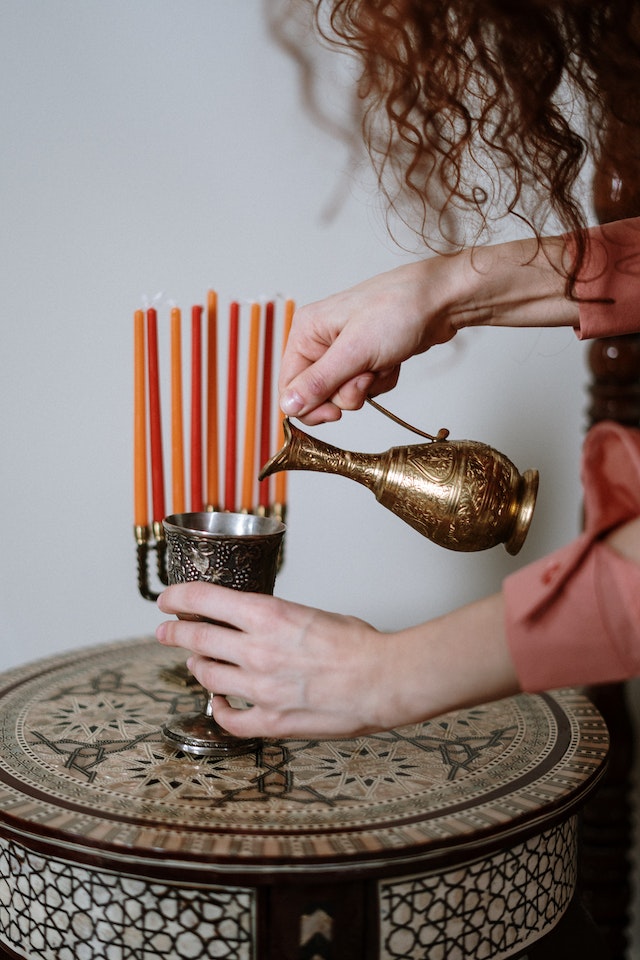 An interesting and somehow puzzling element of the Book of Esther is the frequent references to drinking parties, specifically during Purim. One of the central customs of Purim is the drinking of alcohol, often to excess. In fact, the Talmud famously states that on Purim, one is supposed to drink until they can no longer tell the difference between the phrases “blessed be Mordechai” and “cursed be Haman.” However, it has also been a source of controversy and debate within Jewish communities.
An interesting and somehow puzzling element of the Book of Esther is the frequent references to drinking parties, specifically during Purim. One of the central customs of Purim is the drinking of alcohol, often to excess. In fact, the Talmud famously states that on Purim, one is supposed to drink until they can no longer tell the difference between the phrases “blessed be Mordechai” and “cursed be Haman.” However, it has also been a source of controversy and debate within Jewish communities.
If you’re planning on taking trips that can help enhance your knowledge of our shared history, join us on a kosher cruise, with Kosher River Cruises. Travel in style, experience fine kosher dining and daily services. Experience fabulous destinations whilst staying in luxury onboard. Make this a Jewish vacation over and above the norm.
Rabba and Rabbi Zeira
In the Gemara, the story of Rabba and Rabbi Zeira narrates how Rabba got so intoxicated that he slaughtered his colleague Rabbi Zeira. Now the Gemara goes on to say that when he became sober and saw what he had done, he immediately prayed to God. Fortunately, a miracle happened and Rabbi Zeira was miraculously revived. However, a year passes and Rabba invites Rabbi Zeira to a Purim feast once again. To which Rabbi Zeira expresses how miracles do not simply happen every hour and he would rather not go through that experience again. Nevertheless, the concept of out of control behavior that is possibly due to intoxication is something that the Rabbis have continuously criticized.
There have also been lots of restrictions when it comes to the appropriate behavior during the holiday of Purim. Even for Lubavitch Hasidim, that regarded communal drinking as an act of worship through fostering communal connections, singing, and gaiety. The ban that was established by Rabbi Menachem Mendel Schneerson that talked about having too many drinks on Purim would still be observed. This is due to the possibility of excessive inebriation which can be dangerous and harmful in many ways.
Theodosian Code
Additionally, we also have reference to this from the Romans and their legislation. The Theodosian Code specifically includes an interesting passage that was recorded in the year 438 that was based on an earlier law that was dictated in the year 409 that specifically restricted Jews from getting too inebriated during their Purim celebrations. Aside from drinking, another activity that was particularly excoriated was the burning of an effigy of Haman. In the ancient world, they would read this as Haman being crucified. As a matter of fact, this was how Haman’s treatment was portrayed by Jews and non-Jews alike during the Ancient times.
For example, if you look at Dante’s great early 14th century Italian poem entitled, “Porgatorio,” Haman is described as being crucified. Additionally, Michelangelo also portrayed Haman in a similar way in the Sistine Chapel. Ultimately, this was the way in which everyone understood how Haman was killed. Thus, it could elicit a number of misunderstandings when parties get out of hand and they partake in Haman in effigy and decide to crucify and burn him after. There is even an entire book written by Elliot Horowitz entitled, “Reckless Rites: Purim and the Legacy of Jewish Violence.”
At the end of the day, it is great to keep in mind that this is a cautionary tale that we wish to celebrate on Purim. However, we should be aware of the boundaries and restrictions that the Rabbi set for us. Nevertheless, wanting to deeply understand and explore the spiritual meaning of Purim through the use of alcohol is still encouraged but beyond that can be an incredibly dangerous thing.
